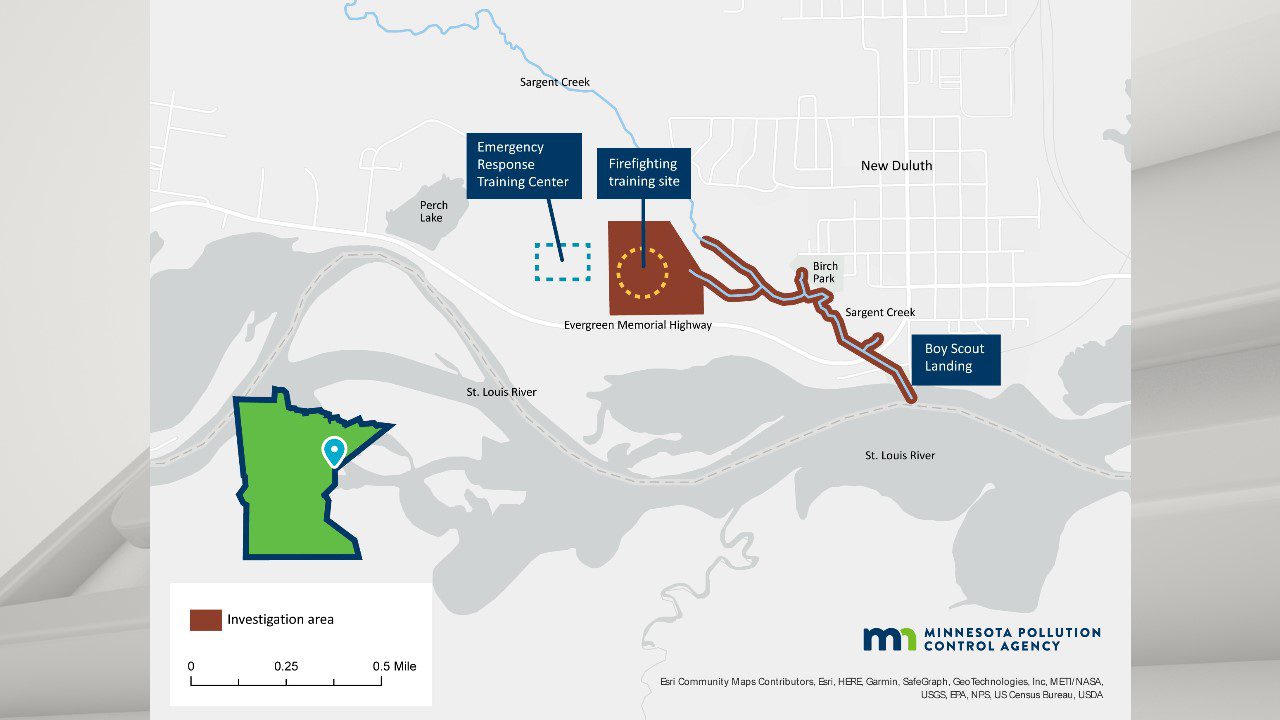MPCA: PFAS contamination near Sergeant Creek, plan to address with LSC
[anvplayer video=”5181301″ station=”998130″]
The Minnesota Pollution Control Agency (MPCA) and Lake Superior College (LSC) announced Tuesday their plans to address PFAS contamination near Sergeant Creek in Duluth.
The MPCA says they detected elevated levels of PFAS in a tributary of the creek, during an ongoing study of the St. Louis River estuary. The investigation found that the PFAS pollution came from firefighting foam used at LSC’s Emergency Response Training Center. Authorities say the foam contaminated onsite soils, a nearby stream that leads to Sergeant Creek, and lower portions of the creek until it meets the St. Louis River at Boy Scout Landing.
The City of Duluth says drinking water has not been impacted by this contamination, and remains safe to consume. The MPCA says they have tested households using private wells for drinking water within one mile of the training facility, and most recent results did not detect PFAS in private drinking water wells.
PFAS are sometimes called “forever chemicals” due to their longevity in the environment. Human exposure to certain levels and types of PFAS is associated with an elevated risk of negative health outcomes.
Lake Superior College signed an agreement earlier this month to work with the MPCA to address PFAS contamination. The first step in the remediation process will be to conduct PFAS monitoring at and near the training facility. Monitoring results will help the MPCA and Lake Superior College better understand the contamination, its location, and how to reduce levels in the environment.

(MPCA)
The college says they have hired an environmental consultant to prepare a work plan to define the extent of the release in soil, groundwater, and surface water, including taking appropriate actions to mitigate the release.
“Protecting residents and communities from PFAS pollution around the state is a growing effort that requires partnerships, policies, and prevention,” said Kirk Koudelka, MPCA assistant commissioner for land policy and strategic initiatives. “The nature of the Emergency Response Training Center contamination site reaffirms decisions by the Legislature and Governor Tim Walz to take preventative action by restricting the use of firefighting foam containing PFAS in Minnesota.”
“Lake Superior College has long been committed to using only approved materials in its firefighting training, and as standards have evolved so have the materials we’ve used in our instruction,” said Dr. Patricia Rogers, president of Lake Superior College. “Now that the impact of these past materials has come to light the college is committed to this collaborative effort with the MPCA.”
The use of firefighting foam containing intentionally added PFAS for testing or training purposes has been prohibited in Minnesota since July 1, 2020. On May 24, 2023, Governor Tim Walz signed legislation largely prohibiting the use of firefighting foam containing intentionally added PFAS effective January 1, 2024. The new laws, including Amara’s Law, include other pollution prevention measures called for in Minnesota’s PFAS Blueprint, which is the state’s comprehensive plan to prevent, manage, and cleanup PFAS pollution.
The MPCA says they are continuing their study in the St. Louis River estuary, along with other waters along Lake Superior. The study is part of an effort across the Great Lakes funded by the U.S. Environmental Protection Agency.